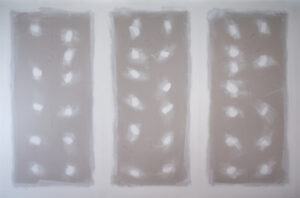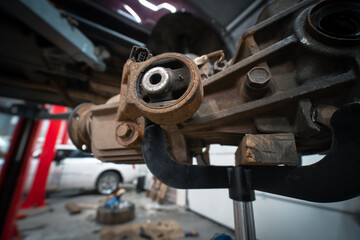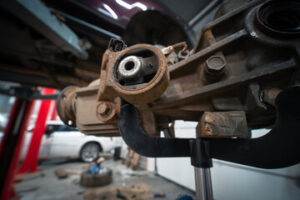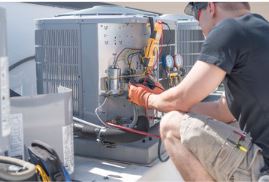 Private Label masters is a course on how to start and scale an FBA business. It includes eight training modules taught by a successful Amazon seller, Tim Sanders. For the past two years, he has publicly showcased his success and course on Facebook and YouTube.
Private Label masters is a course on how to start and scale an FBA business. It includes eight training modules taught by a successful Amazon seller, Tim Sanders. For the past two years, he has publicly showcased his success and course on Facebook and YouTube.
He claims his method works but warns that it’s not a get-rich-quick scheme. He explains that it requires a lot of work upfront and that you should expect slow results. Visit https://centerforworklife.com/opp/amazon-fba/private-label-masters/ for more information.
Private label masters is an online course that helps you start and grow a profitable business. Its creator is Tim Sanders, a former Yahoo executive with extensive experience in e-commerce and entrepreneurship. His program teaches students how to sell products on Amazon using private label. Private labeling is a great way to make money on Amazon because it removes the middleman, resulting in higher sales profits. In addition, it allows you to build a brand identity and attract loyal customers.
This course is based on Tim’s own experiences and has been very popular in the ecommerce world. It has many positive reviews and is recommended by reputable sources. However, there are also some negative reviews. These are usually posted by competitors or people with ulterior motives. However, most of the positive reviews are genuine.
The course is a comprehensive and easy-to-follow guide that teaches you the basics of selling on Amazon. Its comprehensive lessons cover everything from research to sourcing and fulfillment. The course includes video tutorials and step-by-step instructions that are easy to understand. In addition, it covers important aspects like running Amazon promotions and handling inventory.
There are also two Facebook groups that supplement the course and offer a community for new and experienced sellers alike. The courses are designed for people who want to build a sustainable, full-time business. Unlike traditional employment, this type of business can be done anywhere in the world with a laptop and an internet connection. This lifestyle enables people to travel and see the world.
While private label masters is an excellent ecommerce training course, it can be expensive. The cost of the program is $5,000 and requires a significant amount of capital to get started. However, it is worth the investment if you are serious about building a successful business.
In the last module, you will learn how to manage your brand’s growth and make more money from Amazon promotions. You will also discover how to run a PPC campaign to maximize your sales. In addition, you will learn how to increase your revenue by increasing product prices and expanding your audience.
Content
Private Label Masters is an online course that teaches people how to start an Amazon FBA business. The program has eight modules that teach students the steps to take to create and market products on Amazon. The modules cover topics such as product research and listing optimization. It also covers advanced marketing strategies. Private Label Masters also teaches how to find a good supplier and use Amazon fulfillment.
The course is based on the experience of Tim Sanders, a successful Amazon seller who made his living by selling private label products. He is a former Yahoo executive and has spoken on entrepreneurship and e-commerce strategy. He has appeared on CNN and CNBC and has written articles for the Wall Street Journal. He has also received awards for his work in the e-commerce industry.
Tim’s approach to teaching is that anyone can achieve success by understanding the underlying principles of a business. He uses this philosophy in his courses and believes that his students can use these skills to change their lives. He emphasizes that Amazon is a crowded marketplace and that it is important to stand out. He also encourages his students to make sure that they have a clear vision of what they want their business to be.
Most of his modules are short and to the point, with the exception of the one on product research. This module is a little over three hours long, but it is worth the investment because poor research is one of the main reasons that FBA businesses fail. Another useful module is the one on Amazon SEO, which covers a lot of ground in a brief amount of time.
In addition to his video courses, Tim offers live Q&A calls that last about a hour. These are free to join and can be a great way to learn from other members of the community. His approach is unique and he has a lot of passion for what he does. This has led to many success stories for his students. However, it is essential to note that he does not offer any guarantees, which means you should check his refund policy before you decide to buy his courses.
Reputation
Private Label masters is a one-stop shop for entrepreneurs looking to start an online business using the private label method. The course teaches how to use product research, branding design strategies and Amazon promotions to get high keyword rankings in low competition niches. It also teaches how to create a sales funnel and connect with customers through email marketing and social media.
The course is well-produced and offers a variety of videos on different aspects of the process of starting an FBA business. For example, there is a video on how to use the most effective software for researching and selecting products. In addition, the video covers how to set up an LLC business and obtain a tax ID. It also explains the benefits of using a storefront URL and the best way to optimize the listing. It also outlines the best ways to promote a product and how to choose an optimal price point.
Tim Sanders, the creator of Private Label Masters, is an expert on entrepreneurship and has an extensive background in e-commerce. He has a large following on YouTube and is a prolific speaker at entrepreneurial events. His course combines his expertise with the knowledge of other experts to create a comprehensive guide for starting an online business.
His course includes a series of videos and PDFs that explain how to build an Amazon FBA business from scratch. It also discusses a variety of additional topics, including how to manage a small business and ad campaign management. It also includes an interview with Leo Limin, the CEO of ZonJump, a company that helps Amazon sellers launch their businesses.
While the course is comprehensive, it is not a complete solution to all the challenges of creating an online business. It is intended to help beginners get started and will give them a solid foundation to build their business. It does not cover every detail, but it is a good choice for anyone who wants to make money selling on Amazon. The course costs $5,000 upfront with a $1,500 discount for the first sale call.
Final Words
Private label masters is a business course that guides you in the process of setting up and running your own Amazon FBA (fulfilled by amazon) business. It’s a comprehensive course with multiple modules that help you build a profitable online business from the ground up. The course consists of 8 different modules, each with a specific focus on a different aspect of the Amazon FBA business.
One of the most important aspects of Private Label Masters is the way it helps you get in the right mindset. It emphasizes that get-rich-quick isn’t the goal and that your goal should be autonomy. It also emphasizes the importance of choosing an evergreen product that can bring in consistent revenue.
It’s also important to remember that you’re going to need top-notch talent in order to run a successful private label business. You’ll need photographers, copywriters, package designers, and more. It’s not easy work, and it can take a lot of time to make this business profitable. However, if you’re committed to it, you can succeed.
Another thing to keep in mind is that this business model requires a lot of upfront investment. You’ll need to invest money in a warehouse and hire staff. You’ll also need to pay for software tools and inventory. In addition, you’ll need to spend money on advertising and marketing. This can be a huge financial burden for many people.
Finally, it’s important to be aware that this business model can be very volatile. As a result, you should always research any new venture before making any decisions. This is especially true if you’re considering investing in Private Label Masters.
Tim Sanders is an expert at Amazon FBA and has built a highly profitable business from the ground up. He also has a YouTube channel where he shares valuable tips on launching an Amazon business. He also has a Facebook group that he uses to communicate with his customers.
His videos are informative, and he doesn’t make any exaggerated claims of income. However, his YouTube videos are short and may be difficult to follow. Also, he doesn’t reveal any details about his background. This is often a sign of fraud or scam.




